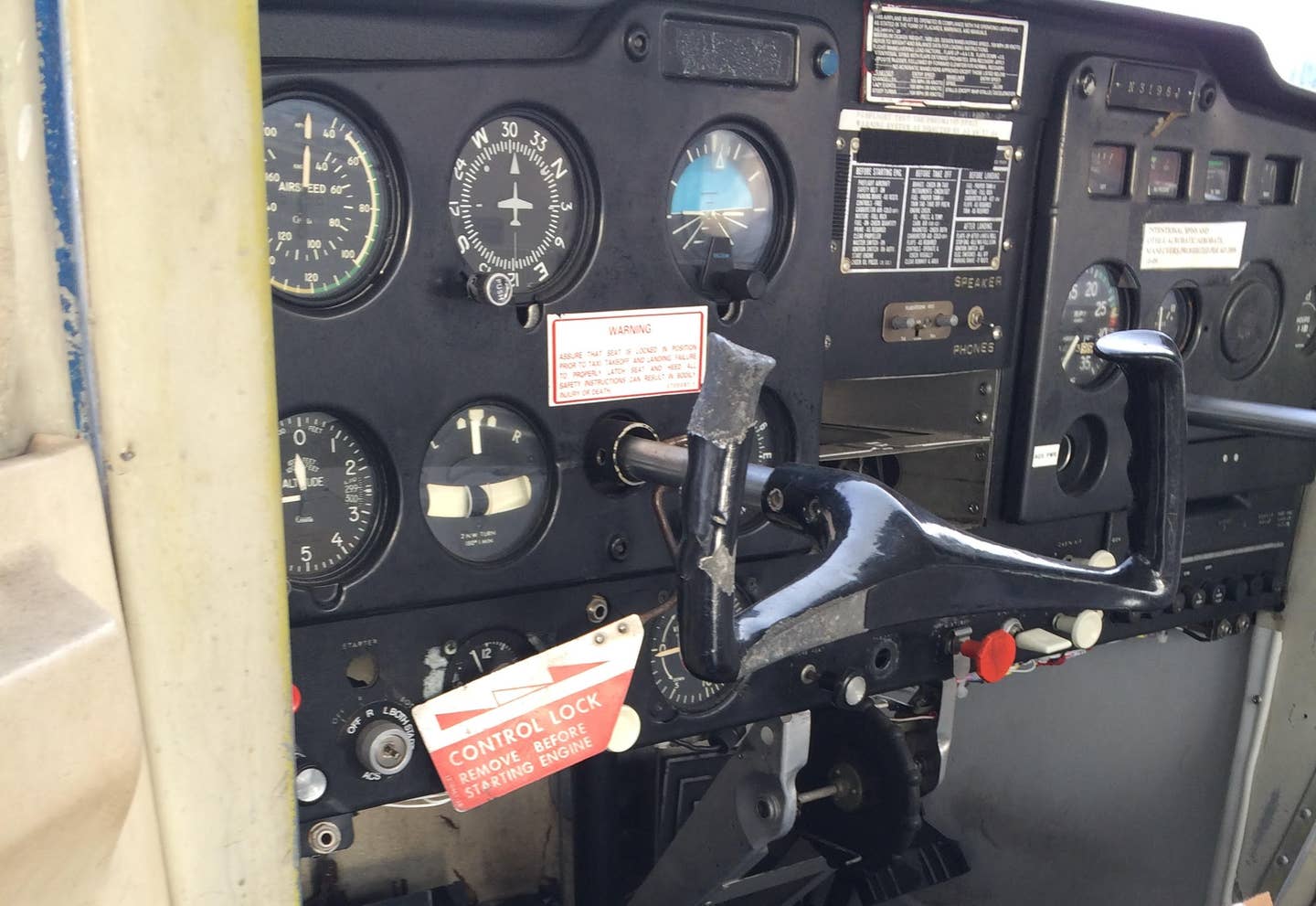The Potentially Deadly Distraction of Social Media
These days lots of pilots have cameras in the cockpit, and it can be a double-edged sword.

It’s easy to become distracted or get behind the airplane during a flight, and posting video on social media can make the pilot’s mistakes public in a big way. [Courtesy: StockSnap/ Pixabay]
"Do you mind if I take a video of the pattern and the landing?" the learner asked, holding up his smartphone.
"How are you going to do that and fly?" I asked.
"I want you to fly it and I will video it so I can study it later,” he said.
This seemed like a good plan and we did it. This was before GoPros, and it was the first time I used video as an educational tool in the aircraft.
These days lots of pilots have cameras in the cockpit. It can be a double-edged sword.
"The pilot was an influencer and routinely recorded flights that were shared to his/her social media." How many times have you read something like this in an accident report either compiled by the nonaviation media or the National Transportation Safety Board (NTSB)?
Documenting Distraction
It's easy to become distracted or get behind the airplane during a flight, and posting video on social media can make the pilot's mistakes public in a big way. An example of this is the accident involving YouTube influencer and vlogger Jenny Blalock.
In 2021 Blalock, from Knoxville, Tennessee, was beginning her aviation journey and shared her experiences on her YouTube channel, “TNFlygirl.” Sadly, Blalock, 45, and her father James, 78, were killed on December 7 while flying her 1965 Beechcraft 35-C33 Debonair. The aircraft was equipped with a 260 hp Continental IO-470 engine, making it a high performance aircraft. It was also equipped with an autopilot, which if several of Blalock's videos are any indication, was proving to be more of a distraction than a help in the aircraft.
At the time of the accident, Blalock had posted on social media that she had approximately 400 hours of flight experience and was looking forward to earning her instrument rating. However, some of the videos posted before the accident show a pilot who appears to be behind the aircraft —a Debonair is a lot of airplane, and things happen quickly.
A video shot about a year before the accident shows Blalock getting lost while attempting a flight in VFR conditions from Rockwood Airport (KRKW) to Knoxville Downtown Island Airport (KDKX) in Tennessee. Her father, who was not a pilot, was her passenger. The total distance of the flight is 40 nm, basically due east.
During the takeoff roll, Blalock incorrectly accounts for a crosswind by holding the yoke so the aileron on the side with the wind is down, opposite of what it should be. A few minutes later, she realizes she is headed southwest and turns to the northeast. She tries to use the autopilot, remarking, "see where it takes us," then realizes it's taking them to the right. Her father calls her attention to the highway beneath them, remarking they are going in the wrong direction and that they are heading west rather than east. The rest of the video shows her trying to figure out the use of the autopilot and where she is while the aircraft wanders, all the time within visual range of KRKW— the airport they took off from. Yet, she doesn't appear to know where she is.
What is particularly disturbing is that in addition to looking out the window to see the airport they just departed from, the cockpit was equipped with a magnetic compass, a horizontal situation indicator (HSI), GPS, and what appears to be a tablet with ForeFlight. While the magenta line can be a crutch and a lazy way to fly, hitting "DIRECT TO" your destination airport will assist with situational awareness. If the GPS shows you the course is due east, you have to be west of the destination airport.
There are pilots who watched this video after the accident and wondered why the FAA didn't take action.
"The pilot in command is responsible for the safety of the flight," the FAA told FLYING. "This includes ensuring there are no distractions on the flight deck. FAA inspectors do not proactively monitor social media accounts in search of violations. However, if someone reports an alleged violation to the FAA, inspectors will review a variety of information sources during their investigation."
This may mean a review of the other videos.
In the weeks prior to the accident, Blalock had posted videos showing her experimenting with the aircraft's manual trim and autopilot. The aircraft did not have electric trim. The videos show her struggling to make manual trim adjustments to coordinate with the autopilot.
In most cases, trim can be a pilot's friend, as it can be applied to relieve control pressures, making for a smoother, less fatiguing flight. But it can also turn into an enemy, and you find yourself fighting the airplane to maintain nose up or down.
Trim as a Possible Factor in the Accident
According to the NTSB preliminary report, the weather was VFR with light winds when Blalock and her father launched from KDKX , heading to Saline County Regional Airport (KSUZ) in Benton, Arkansas. SkyVector shows the straight-line distance between the two points is 431 nm. The purpose of the flight was to take the aircraft for an avionics upgrade.
Shortly after takeoff, Blalock obtained flight following. The flight data shows that approximately an hour into the flight the aircraft began a series of altitude fluctuations, ultimately concluding in a 12,000-feet-per-minute dive at an estimated speed of 228 knots from which the aircraft did not recover. There was at least one distress call made before contact was lost.
The NTSB examination of the wreckage revealed that the elevator trim was set to a 5-degree nose-down setting, but it was not determined if manual activation of the trim setting resulted in an automatic disengagement of the autopilot. This would likely result in a series of pitch oscillations as the aircraft would be out of trim.
The NTSB is still investigating the accident, and the final results are likely more than a year away. For now, what we can take from the videos and preliminary report is that a pilot needs to know when and how to disengage the autopilot and fly the aircraft by hand. Know where the activation switch and the circuit breaker are. If the autopilot runs away, or is otherwise malfunctioning, pull the circuit breaker.
In at least one of the videos Blalock posted, she appears to be looking for the circuit breakers in her aircraft in midflight.
Think Before You Post
There has been at least one pilot who allegedly intentionally crashed an airplane for "views" on social media. Others post when they have an incident, like clipping an outcropping with a wingtip.
Maybe these events were not done intentionally, but posting them certainly was deliberate. We all make mistakes, and the lucky pilots live to tell about them. Remember, you are working hard to be a pilot, so don't jeopardize it with a poor decision made public.

Subscribe to Our Newsletter
Get the latest FLYING stories delivered directly to your inbox






